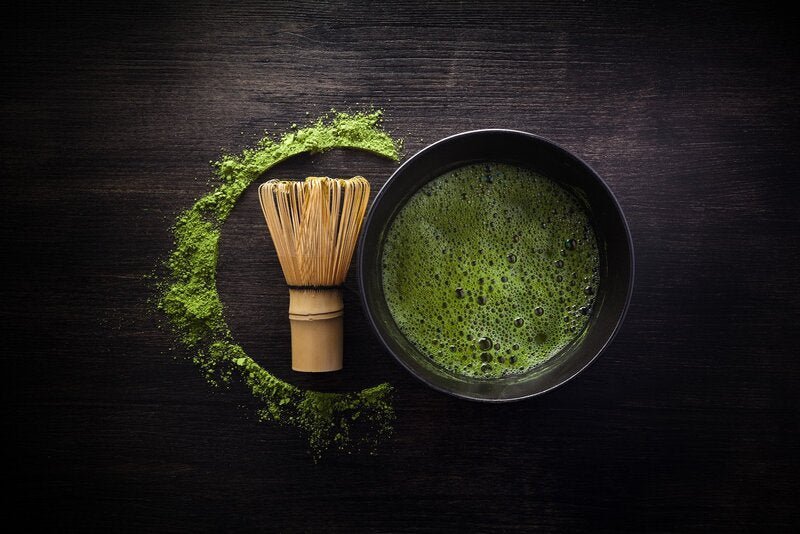
What is matcha: Tea Ceremony, Culture, and Benefits. Here's what you want to know
|
|
Time to read 4 min
|
|
Time to read 4 min
Matcha, pronounced 抹茶"ma-cha," is a finely ground powder of specially grown and processed green tea leaves. The term "抹茶" in Japanese translates to "rubbed tea," highlighting the unique method of production where the leaves are carefully ground into a fine powder. Unlike regular green tea, where leaves are steeped and discarded, matcha involves consuming the entire leaf. This practice provides a more intense flavor and a higher concentration of nutrients.
The history of matcha dates back to the Tang Dynasty in China, where tea leaves were steamed and formed into bricks for easy transport and trade. This method of tea production eventually made its way to Japan in the 12th century, brought by Buddhist monks who had studied in China. These monks, particularly Eisai, introduced the powdered tea form to Japan, where it became an integral part of Zen monasteries. Over time, the practice of drinking matcha spread from the monasteries to the samurai class and eventually to the broader Japanese society.
Chawan (茶碗): A wide-mouthed bowl used to whisk and drink the matcha.
Chasen (茶筅): A bamboo whisk designed to blend the matcha powder with water, creating a smooth, frothy texture.
Chashaku (茶杓): A bamboo scoop used to measure the matcha powder.
To prepare matcha, follow these steps:
"Ichigo Ichie" (一期一会) is a Japanese concept that translates to "one time, one meeting." It embodies the idea that each moment is unique and should be treasured, as it will never occur again in exactly the same way. This philosophy is closely tied to the Japanese tea ceremony, where the act of serving and receiving tea is seen as a once-in-a-lifetime event, deserving of full attention and appreciation.
While Ichigo Ichie is not exclusive to matcha, the tea ceremony provides a perfect setting for practicing this principle. The preparation and consumption of matcha become a meditative and mindful experience, allowing participants to fully engage with the present moment and the people they are with. This approach to hospitality, known as "omotenashi," emphasizes sincerity, attentiveness, and the desire to make each guest feel honored and valued.
The concept of Ichigo Ichie reminds us to savor each moment as if it were the first and last. In the context of a tea ceremony, this means appreciating the subtle details—the sound of the water boiling, the aroma of the tea, the texture of the chawan, and the gentle whisking motion. Each element contributes to a unique experience that cannot be replicated, encouraging participants to be fully present and mindful.
In conclusion, matcha is more than just a type of tea; it is a vital part of Japanese culture, embodying centuries-old traditions and values. From the precise tools and techniques required for its preparation to the philosophical principles of Ichigo Ichie and the numerous health benefits it offers, matcha provides a rich and multifaceted experience.
A creamy, delicious alternative to your regular coffee, matcha lattes blend the earthy flavor of matcha with the smoothness of milk. It's a perfect way to start your day with a boost of energy and calm focus.
This delightful treat combines the refreshing taste of green tea with the sweetness of ice cream. Matcha ice cream is popular in both Japan and around the world for its unique flavor profile and beautiful green color.
Matcha cookies offer a delightful twist on traditional cookies. They are typically soft and chewy, with a slightly bitter matcha flavor that balances perfectly with the sweetness of the dough.Matcha Cake
Matcha cakes are a favorite among dessert lovers. Whether it’s a light and fluffy sponge cake or a rich cheesecake, the addition of matcha provides a unique taste and a stunning green hue.
Mochi, a traditional Japanese rice cake, gets a delicious upgrade with the addition of matcha. The chewy texture of mochi combined with the earthy taste of matcha makes for a delightful snack or dessert.









